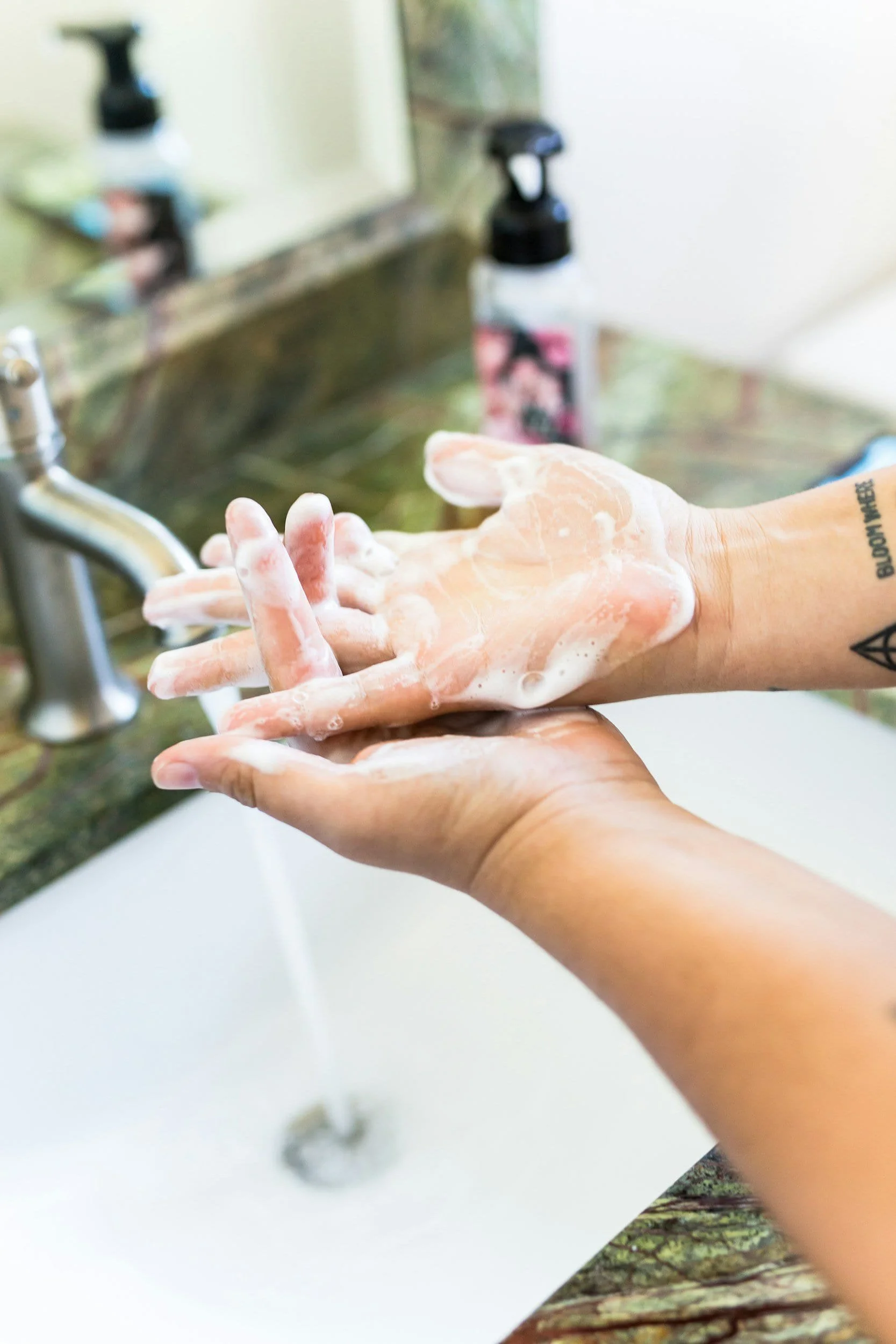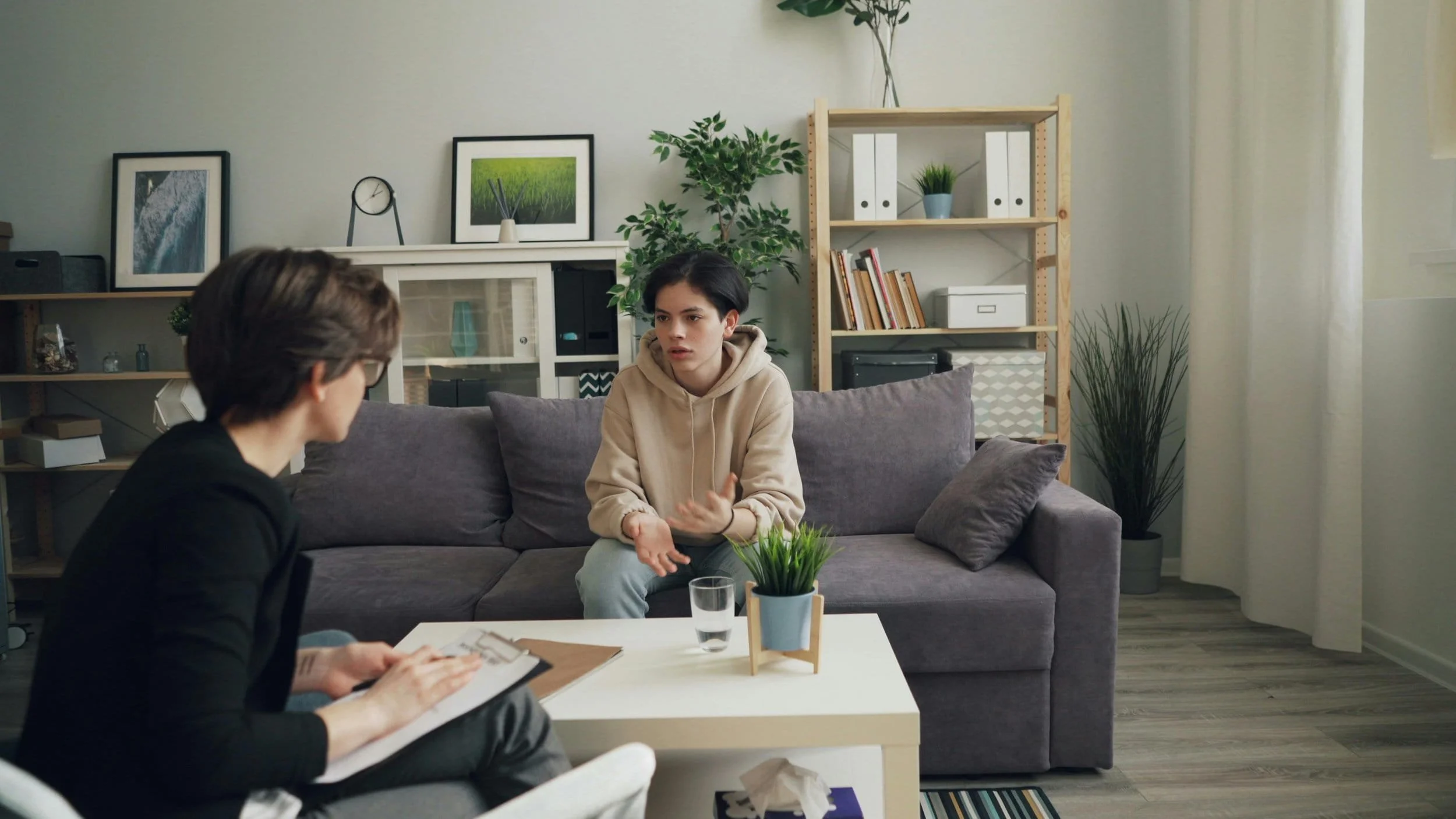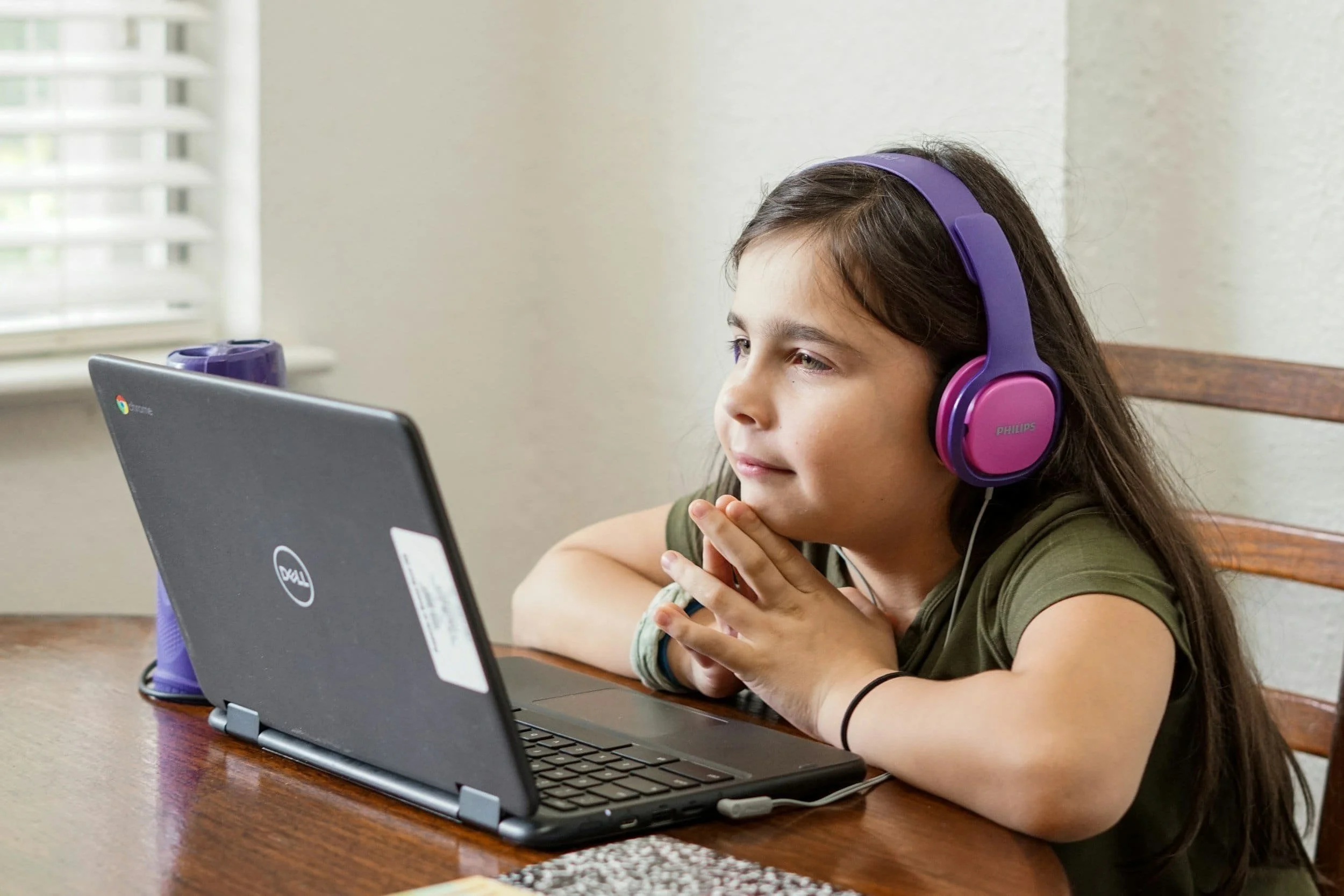OCD Treatment for Kids in Davidson, North Carolina
How Do You Help a Child with OCD?
Whether your child is newly diagnosed our you are simply suspecting OCD, figuring out the next steps for your child can be a daunting process. It is a tough diagnosis to pin down, often being mistaken at first for other forms of anxiety or simply quirky behavior. The worries it causes often defy logic, and can be embarrassing for kids to share and alarming for parents to hear. And just when you think you have it all figured out, your child’s worries might shift to a new topic and you’re right back where you started.
I know what it’s like to be a kid with OCD: I was diagnosed at age 7, long before I ever dreamed about being a children’s therapist! For me, OCD started small, and then gradually expanded its reach until worries and rituals were affecting nearly every part of my life. It was exhausting, and like most kids with OCD, I knew that I was different. At times, I worried that something must really be wrong with me, and maybe I was going crazy. The more the rituals happened, the more hopeless I felt about ever getting rid of them.
Thankfully, it’s not hopeless. There’s a lot we can do to help a child with OCD, including:
Educating them about what causes OCD (genetics and a glitchy brain, not anything you did!)
Explaining that their repeated behaviors and worries (even the scary ones) are a normal part of OCD
Teaching them to notice when their thoughts might be exaggerated or inaccurate
Providing emotional support without enabling anxiety, which makes OCD worse over time
Setting limits on how much reassurance and explanation we provide—this can backfire for OCD kids!
Encouraging them to gradually face their fears without engaging in rituals or repeated behaviors
Facing your fears instead of avoiding or enabling them sounds simple, but in practice it can be really hard. Nobody wants to torture their kid by suddenly taking away all their coping mechanisms! It has to be a gradual process, and if your family has gotten accustomed to bending over backwards to avoid setting off a child’s anxiety, the process might feel complicated.
This is where therapy can be really helpful: a trained OCD therapist can help both you and your child understand their condition, and learn skills you can use at home on a daily basis to make things easier. They can guide you through the process of gradually taking your life back from OCD. This is the kind of therapy I really wish I’d had as a little kid. I’m so happy I get to offer it to other children now that I’ve grown up!
Would Your Child Benefit from OCD Treatment?
Unsure if your child has OCD or whether treatment would help? Reviewing the symptoms of OCD is a good first step. Many people have a mental image of OCD people as being clean freaks and perfectionists, with hyper-organized rooms and amazing hygiene. That is definitely not always the case!
Common symptoms of OCD include:
Repeated thoughts, images, or worries that don’t go away with reassurance
Unwanted worries about things that are upsetting or taboo, like germs, illness, violence, death, or sexuality
Fears that seem to go against a child’s nature, like a peaceful child worrying they might hurt someone
Frequently checking things, washing, tapping, saying certain words, or doing other repeated tasks to manage anxiety
Repeatedly asking for reassurance from parents, friends, or caregivers
Avoiding people, places or things that remind them of their fears
If many of these sound familiar, you’re on the right track considering OCD treatment. You can also ask yourself a few questions about your child’s symptoms to see if it makes sense to give therapy a try:
Have the symptoms continued for more than a month or two?
Are they getting better, staying the same, or worsening over time?
Is it easy or difficult for your child to control their worries when they happen?
Are worries or repeated behaviors making daily life difficult?
Do the OCD symptoms interfere with school, friendships, bedtime, or other important aspects of life?
If your child’s symptoms have been consistent over the long term, aren’t getting better (or are getting worse), and are starting to interfere with life, OCD therapy can help.
What is the Best OCD Treatment for Kids?
Sometimes it seems like “normal” therapy doesn’t work for OCD. You can talk about the worries, the rituals, and how they make you feel all you want, and things might not get much better. If you’re the parent of a younger child, you might find that play therapy is a positive and supportive outlet for your child, but doesn’t seem to move the needle when it comes to changing behavior at home.
Why is this? For one, talk therapy often focuses on the why and how. Why do I feel anxious? What is the root cause? What experiences in my life have shaped me into the person I am today? The why and how don’t really matter in OCD treatment: it’s genetic! We know why and how it happens, and there’s not much to be done about that. Most kids with OCD also have really good insight into their problem. They know their brain is giving them weird, unwanted thoughts. They know not everyone thinks this way…and that freaks them out! Kids with OCD don’t need to focus so much on the “why” and “how.” They need help with the “what:” what actionable steps they can take to start feeling better.
Traditional talk therapy can also include, well…lots ot talking about your worries. Your child may find themselves sharing a lot about what bothers them, how it makes them feel, and getting lots of empathy and validation from their counselor. Empathy and validation are great, but over-disucssing OCD worries is not. Kids with OCD are prone to ruminating: they fixate on their fears, and the more they talk about them, the more their anxiety grows. It’s also common for OCD kids to excessively seek out reassurance from adults, which can become a compulsive behavior. We want to be empathetic but also avoid this!
Children with OCD need treatment that is understanding and sensitive to their needs while also teaching them how to gradually face their fears without relying on compulsive behaviors. They need to prove to themselves (and their anxious brains) that nothing terrible happens when they ignore OCD’s demands. Over time, this can help them live a freer, more flexible life where worries are an occasional annoyance, rather than something that rules their world.
Exposure and Response Prevention is designed to help children with OCD accomplish these tasks. It’s a form of cognitive behavioral therapy (CBT) that was created especially for people with Obsessive-Compulsive Disorder. It is evidence-based, meaning there’s a lot of research supporting its use. It’s also highly effective: as many as 80% of children see significant improvement after receiving ERP therapy. ERP is practical, direct, and intended to be a short-term therapy, meaning you are not likely to be attending sessions for years and years. It’s exactly the kind of approach I wish had been around when I was a kid. And, crazily enough, it can even be kind of fun.
How Does OCD Therapy for Kids Work?
OCD therapy for kids is usually scheduled on a weekly basis, either in-person in a therapist’s office or online, as a virtual appointment. Children often attend their sessions alone, but parents are a big part of the process as well. If you’re the parent of a child in OCD therapy, you can expect to share updates in your child’s appointments, meet with the therapist on your own for parent appointments, and support your child in practicing their skills and completing any assigned “homework” throughout the week.
In your first sessions, you can expect to be asked a lot of questions about your child and their anxiety. Your therapist will probably be focused on gathering information and developing a good relationship with you and your child—you’ll need to trust each other in order to do the hard work later on! Early therapy visits might also include education on OCD, as well as coping skills your child can begin using to better manage anxiety and worries when they arise.
Next, your therapist will help you and your child to create a list of situations that would trigger your child’s anxiety or make them feel compelled to repeat a compulsive behavior. You’ll rank this list, starting with easy activities and moving up to ones that feel impossibly hard to do. The goal is to include easy, medium, and difficult challenges: your therapist can help you get creative in filling in any blanks on your list!
This list becomes a roadmap for exposure practice, which is where ERP gets its name. The goal is to help your child safely face their fear in a controlled environment (this is the “exposure” part) without resorting to any compulsive behaviors, like checking, washing, or asking for reassurance (the “response prevention” part). With repeated practice, your child can re-train their brain to stop sending them fear signals in these situations. They learn through experience that nothing bad happens to them when they ignore their OCD urges. Life carries on! Over time, the OCD urges become weaker and weaker, as children become more confident in their ability to handle any difficulties that come their way.
Begin OCD Treatment for Your Child in Davidson, North Carolina
I’m a children’s OCD therapist who is certified through the International OCD Foundation to treat kids using Exposure and Response Prevention (ERP), which is considered the “gold standard” or “front line” treatment for obsessive-compulsive disorder. I’ve also been diagnosed with OCD since age 7, so I have plenty of real life experience dealing with this very difficult and often misunderstood condition. I’m happy to report that I live a pretty happy, boring, “normal” life these days unbothered by OCD thoughts. Sometimes it’s comforting for kids to hear this!
My office is located in Davidson, North Carolina, just north of Charlotte in the Lake Norman area. Just off of the roundabouts at exit 30, the office is convenient for families located in Davidson and nearby towns including Cornelius, Mooresville, Huntersville, and North Charlotte. I’m very close to Davidson Day School and the Community School of Davidson, so students from those schools have a particularly easy time reaching me.
As a therapist, I prioritize goal-setting and making sure my clients are making clear progress without sacrificing fun and connection. I’d describe my approach as both practical and creative. I really want to see my kid clients succeed and return to life without therapy. In addition to my training in ERP therapy for OCD, I’m also trained as a play and drama therapist. I try to incorporate some playfulness into my sessions with clients of all ages, since exposure therapy can be such challenging work.
Since I know what it’s like to have OCD, I really empathize with what my clients are going through. I’m also fairly un-schockable as a therapist! Your child can rest assured that as alarming as their intrusive thoughts seem to them, I have heard it all before.
Not Local to Charlotte? Try Online OCD Therapy with Me.
Depending on where you live, it can be hard to find a local therapist who specializes in pediatric OCD. In-person therapy can also be a challenge if your child has a busy schedule or you can’t reliably drive them to their session every week. Because it’s structured and goal-oriented, OCD therapy tends to tranlsate well into an online format for many kids. I’m happy to offer online therapy for OCD for kids who are not able to join me in the office.
Here’s how online OCD therapy works, at least with me. We can find creative ways to practice Exposure and Response Prevention over telehealth, such as watching videos together, journaling or using guided visualizations, or having the child try an exposure in their own home while supervised. I share a document with parents that includes our list of exposure challenges and outlines any assigned “homework” for the week. That way, it’s easy for all of us to track our progress. Parents need to keep up with exposure practice at home, just as they would for in-person sessions. We can meet virtually as needed to tweak their child’s treatment plan and problem-solve any tricky situations.
I’m licensed to treat children for OCD in three states: New York, North Carolina, and Florida. If you live anywhere in one of these states, we can connect for therapy using video sessions. If you live somewhere else and you’re looking for ERP therapy for your child, check out the therapist database from the International OCD Foundation.
Frequently Asked Questions
-
Obsessive-compulsive disorder, or OCD, is a mental health condition that causes people to experience unwanted thoughts, images, or worries. People with OCD feel a strong urge to repeat behaviors or activities like tapping, checking, washing, or saying certain things in order to reduce anxiety caused by their obsessive thoughts.
OCD affects about 2-3% of people, and symptoms commonly start in the tween or teen years. -
Symptoms of OCD include:
Repeated worries, images or thoughts that come to mind when a child doesn’t want them
Thoughts that are taboo in nature or seem to be the opposite of a child’s personality
Compulsive beaviors such as repeatedly tapping, checking things, counting, washing, or saying words or phrases out loud
Asking for reassurance over and over, even though it provides limited relief
Avoiding people, places or things that trigger anxiety
-
OCD is believed to be largely a genetic condition. If a child has family members with OCD or other anxiety disorders, they’re more likely to develop OCD themselves. Trauma and stress might play a role in setting off OCD symptoms for some kids, especially if they are genetically predisposed to it.
-
Exposure and Response Preention is considered the “gold standard” or “first line” treatment for OCD due to its effectiveness. Most studies show that beteween 65 and 80% participants get significantly better in ERP therapy. No form of therapy is 100% effective, but people with severe OCD often see better results when medication and therapy are used together.
-
ERP therapy takes time and work! It is not easy to force yourself to face your biggest fears, even when you really want to get better. Families need to be prepared to set aside time during the week to help their child practice, and change the way they approach their child’s anxiety. In some cases, a child’s anxiety may get worse before it gets better: this is something to consider as well when deciding if ERP is right for you.
-
ERP is considered a short-term therapy. Many people begin seeing results in 2-3 months if they’re attending weekly sessions. In my experience, most kids are feeling much better and ready to graduate therapy by the 6 month mark. If your child’s symptoms are mild, you may see quicker progress. If they’re severe, about a wide variety of subjects, or if your child has additional mental health conditions, it may take longer.





